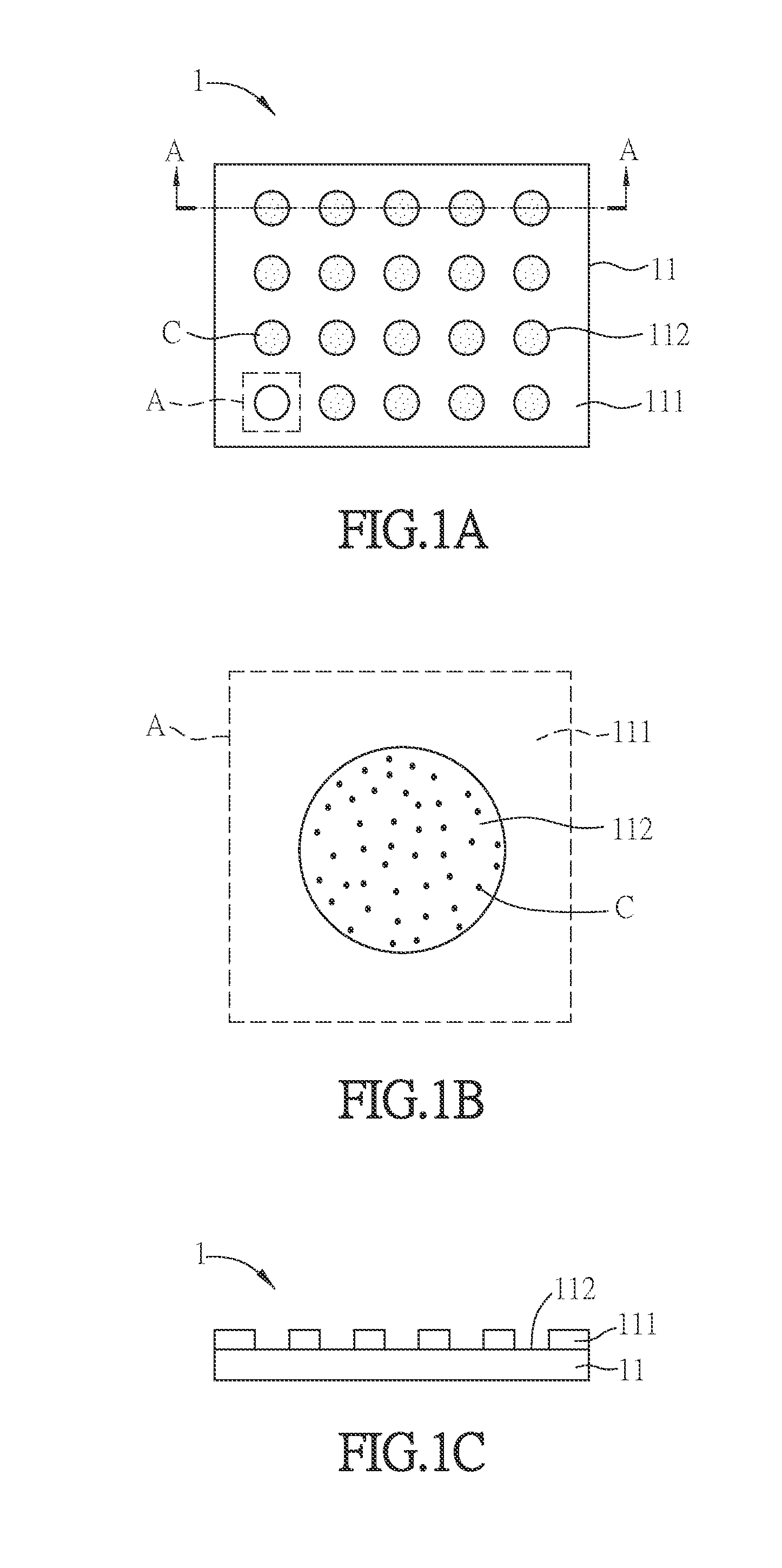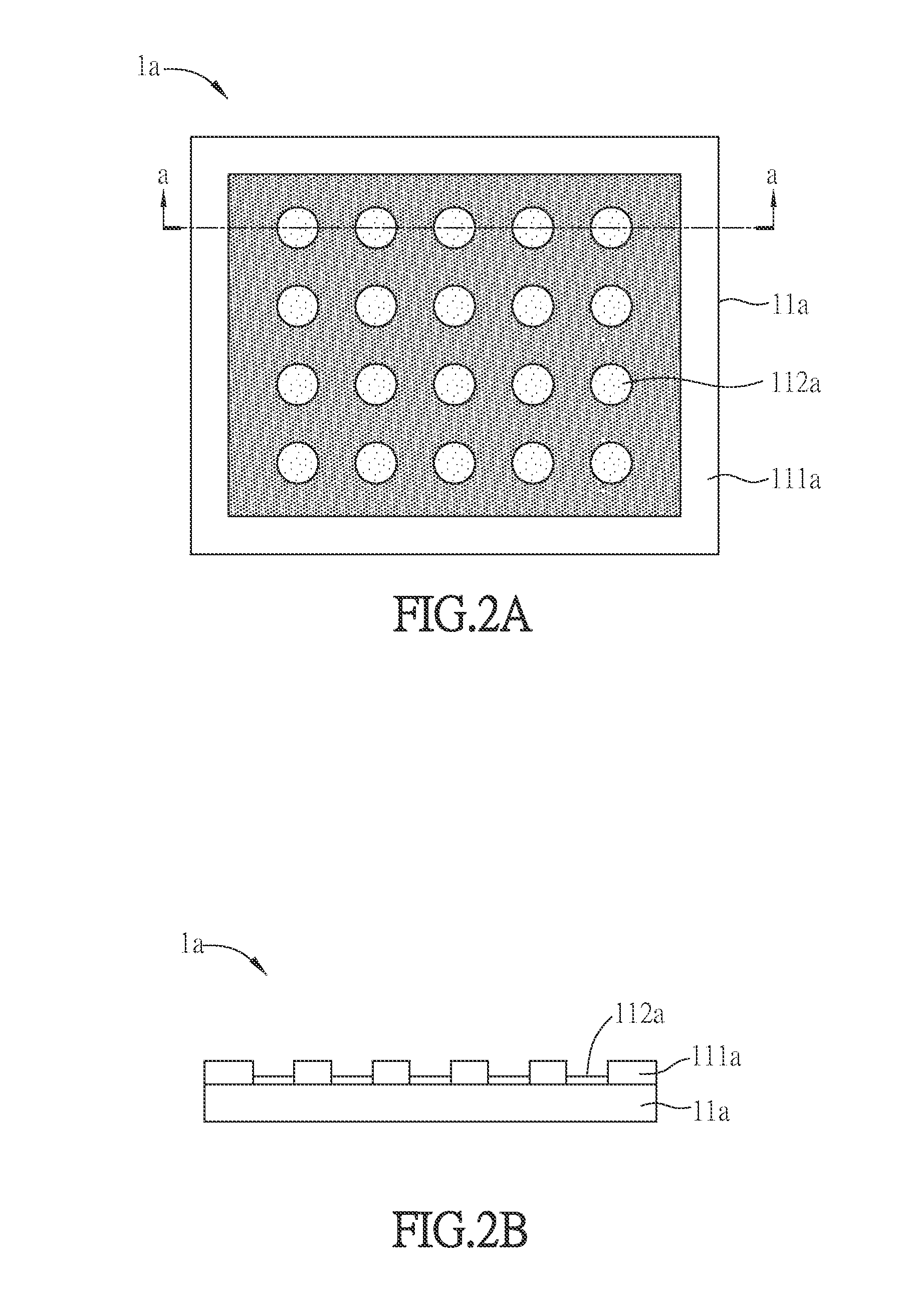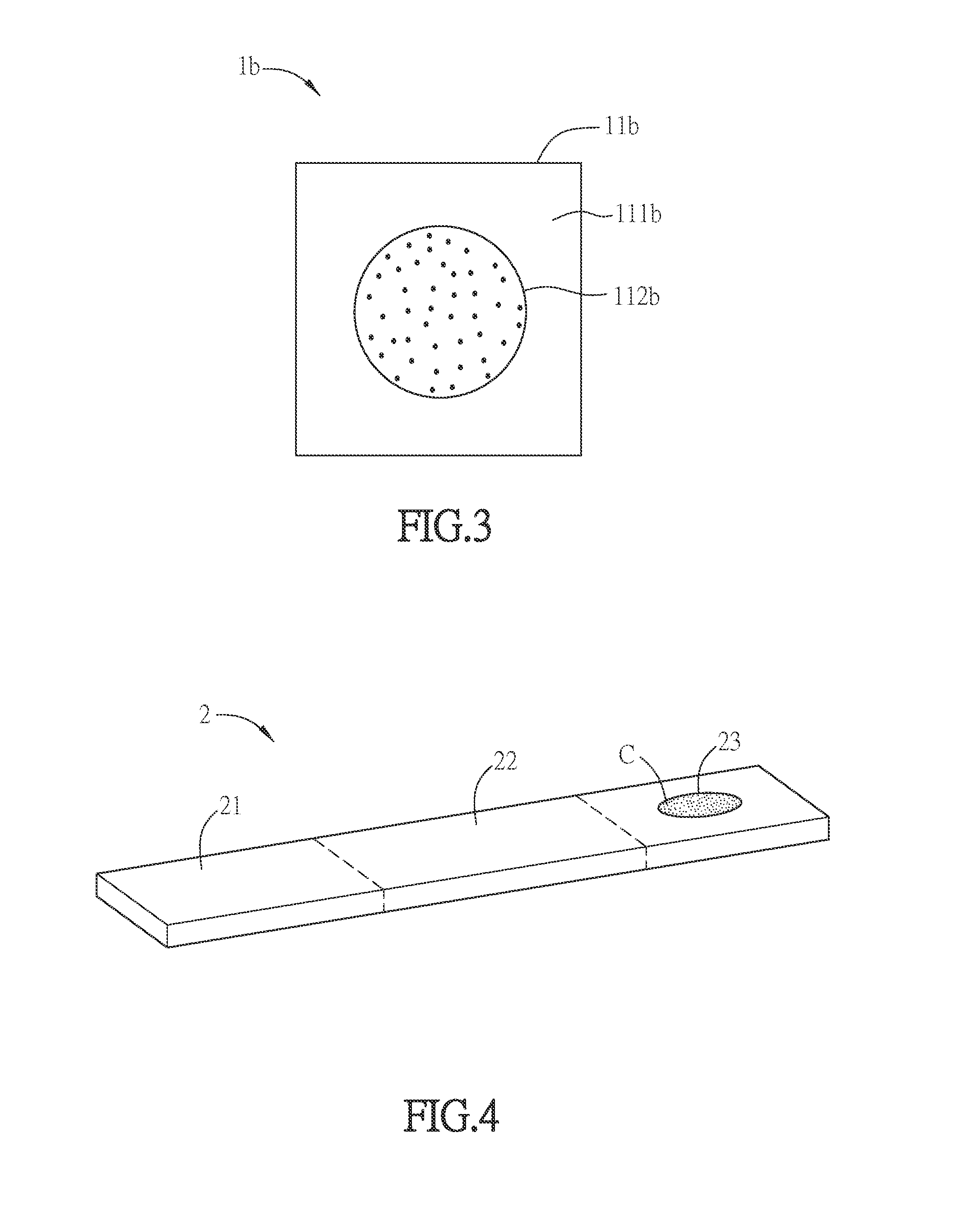Detection device, detection strip, and detection system
a detection device and detection strip technology, applied in the field of detection devices, detection strips, detection systems, can solve the problems of inability to analyze eye fluid samples, inability to apply general blood testing to assess the activity of eye diseases, and inability to sample eye fluid for analysis, etc., to achieve easy and fast operation, improve permeability and water retention ability, and simplify the process
- Summary
- Abstract
- Description
- Claims
- Application Information
AI Technical Summary
Benefits of technology
Problems solved by technology
Method used
Image
Examples
experiment 1
Detection of the VEGF by Paper-Based Detection Device Applying ELISA System
[0062]According to the present invention, it first provides a chromatography filter paper plate. After moistening the paper plate, VEGF antigens are added thereon and stand for 5 to 7 minutes. Then, bovine serum albumin (BSA) is added as blocking agents to prevent non-specific binding. After standing for 5 to 7 minutes, anti-VEGF antibodies which conjugate HRP are added to react with the antigens for 7 to 10 minutes. Next, the second blocking agent Streptavidin is added to react with reagents for 7 to 10 minutes. Finally, the chromatography filter paper plate is rinsed. Meanwhile, the solution comprising 3, 3′, 5, 5′-tetramethylbenzidine (TMB) and H2O2 are also added thereon until dry. After capturing the images of the paper plate, the images can be analyzed for gaining information.
[0063]As shown in FIG. 6A and FIG. 6B, they are calibration curves illustrating logarithmic value of the VEGF antigen concentrati...
experiment 2
The Detection of VEGF Concentration Produced by Diabetes Patients with Retinopathy Symptom by Paper-Based Detection Device Applying ELISA System
[0064]Determined by the above-mentioned method, the average VEGF concentration of the diabetes patients with retinopathy symptom is 740.1±267.7 pg / mL (total samples=14).
experiment 3
The Detection of VEGF Concentration Produced by Age-Related Macular Degeneration Patients by Paper-Based Detection Device Applying ELISA System
[0065]Determined by the above-mentioned method, the average VEGF concentration of the age-related macular degeneration patients is 383±155.5 pg / mL (total samples=17).
PUM
| Property | Measurement | Unit |
|---|---|---|
| pore size | aaaaa | aaaaa |
| pore size | aaaaa | aaaaa |
| concentration | aaaaa | aaaaa |
Abstract
Description
Claims
Application Information
 Login to View More
Login to View More - R&D
- Intellectual Property
- Life Sciences
- Materials
- Tech Scout
- Unparalleled Data Quality
- Higher Quality Content
- 60% Fewer Hallucinations
Browse by: Latest US Patents, China's latest patents, Technical Efficacy Thesaurus, Application Domain, Technology Topic, Popular Technical Reports.
© 2025 PatSnap. All rights reserved.Legal|Privacy policy|Modern Slavery Act Transparency Statement|Sitemap|About US| Contact US: help@patsnap.com



